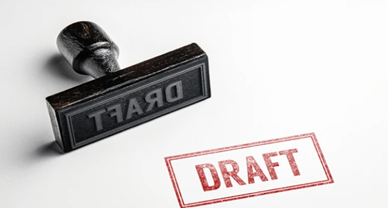Patent Filing Procedure in India
What is a Patent and Why is it Important in India?
A patent is an official right that gives creators or inventors the sole right to use their creation. It acts as a safeguard, keeping others from making, selling, or using the innovation without the creator’s consent. By giving them all the rights for a predetermined amount of time, patents encourage innovators to share their innovations with the public.
In India, a patent is granted by the Indian Patent Office, and the owner is entitled to pursue legal action against unauthorized use of their innovation for up to 20 years from the date of filing. However, a patent does not automatically grant the right to use the invention—the owner must ensure that their use does not violate any existing laws or rights.
The procedure of obtaining a patent involves submitting an application to the Indian Patent Office, and if the invention is found to be patentable, the patent will be granted. This process may be expedited, although it can take several years. Although using an idea does not require a patent, it might be challenging to stop others from duplicating it without one.
In this article, we learn about how to file a patent application in India.
Requirement of Patent Filing in India
English or Hindi is the official language of the Indian patent application. If the patent application is filed in any other foreign language, the Controller of Patents will inform the applicant to submit a translation into an official language within two months of the notification date.
To determine the filing date of a patent application in India, the following must be included:
-
A demand for a patent
-
The applicant’s contact information
-
A description or reference to a previous application (if applicable)
-
Proof that the associated fees have been paid

If priority is claimed, a certified copy of the Priority Document must be filed within 16 months of the earliest priority date. If the document is not in English or Hindi, the Controller may require a translation within a specified time.
At present, filing a patent application in India does not require a Power of Attorney. If the applicant is not the inventor, a statement of inventorship must be submitted within 16 months of the filing date or the priority date (if claimed).
Filing of Search Request
After submitting an application, the next phase involves filing a request for examination (RFE). This can be filed along with the application or within 48 months from the priority or filing date.
To expedite the examination, applicants can also opt for expedited examination under certain categories (such as startups or female applicants).
Once the examination request is accepted, a First Examination Report (FER) is generally issued within 12 to 18 months, identifying any objections related to patentability.
Declaration of Ownership
If each inventor is not also an applicant in their individual capacity, an inventorship declaration must be submitted within 16 months of the application’s filing date (or the priority date, if claimed). This declaration should specify the inventors and describe how the applicant(s) obtained rights from the inventor(s), such as through employment or assignment.
Publication of Application
According to Section 11A of the Indian Patents Act, 1970, the patent application is published automatically after 18 months from the filing or priority date, unless it is withdrawn or rejected before publication.
Applicants can also request early publication, which results in the application being published within one month of the request.
The Patent Office may exclude from publication any material it deems offensive, harmful, or contrary to public interest.
Examination of Patents
Once a request for examination is filed and the application is in order, the Controller of Patents refers the application to an examiner. The examiner conducts a search for prior art to assess:
-
Novelty
-
Inventive step (non-obviousness)
-
Industrial applicability
If the application includes more than one invention, the examiner may ask the applicant to choose one. A FER (First Examination Report) is issued, and the applicant must respond to any objections within 6 months (extendable by 3 months).
If significant amendments are made, a supplementary examination may be carried out. Additional fees may apply.
Notification of Grant and Renewal Fees
Once all objections are resolved and the application meets all legal requirements, the patent is granted. The grant is published in the Patent Office Journal, and a certificate of grant is issued to the applicant.
To keep the patent in force, renewal fees must be paid annually starting from the third year (before the end of the second year from the date of filing). If the fee is not paid on time, it can still be paid within six months along with a late fee.
If the grant is delayed, some backdated renewal fees may be required shortly after the patent is granted.


